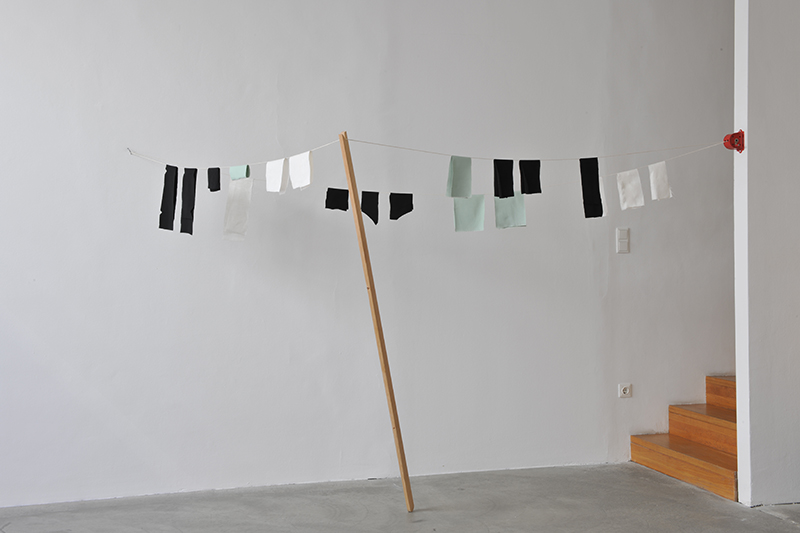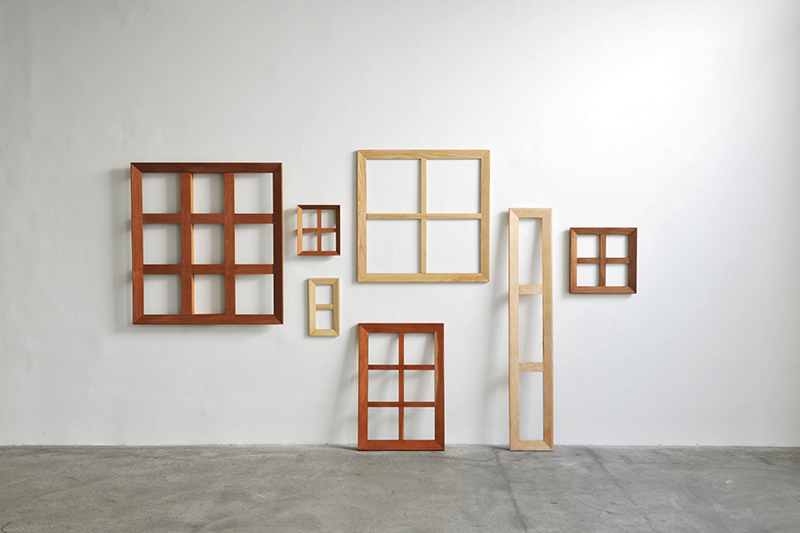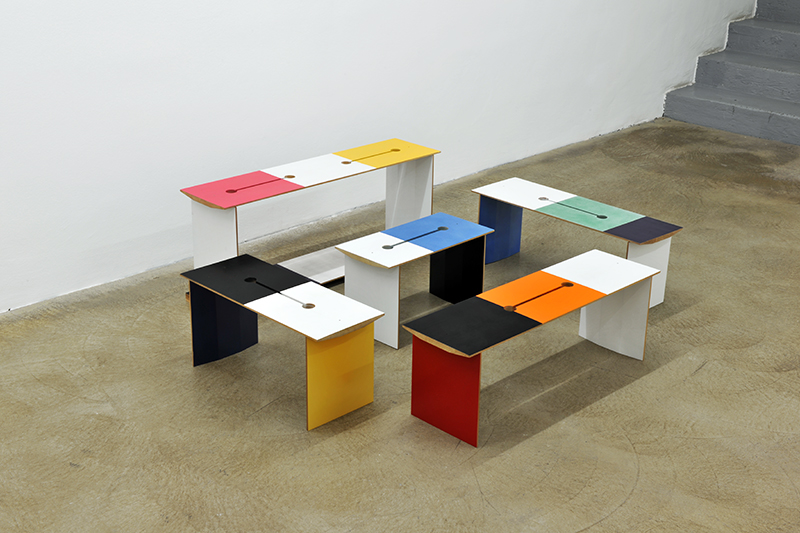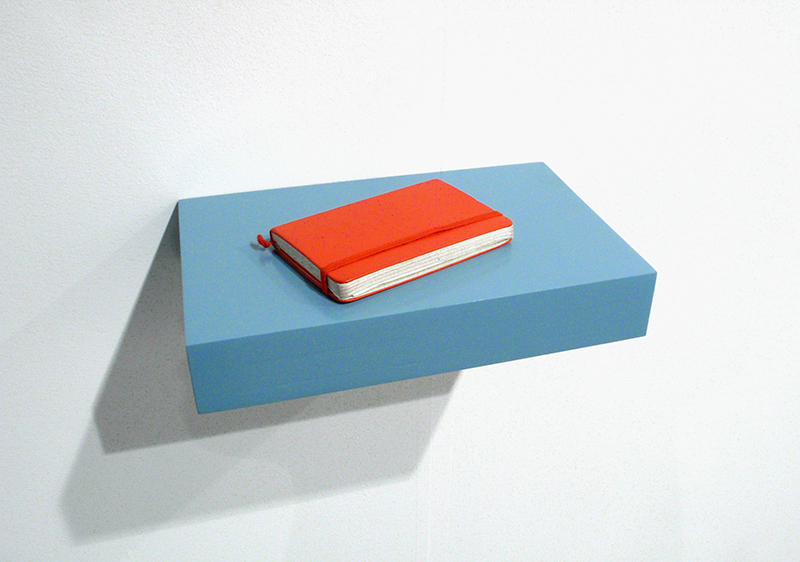Joe Scanlan: Möbel
Galerie Martin Janda
14th September to 29th October 2011
Opening: Tuesday, September 13, 2011, 7:00 pm






Galerie Martin Janda presents the fourth solo exhibition by Joe Scanlan. The exhibition is based on a very simple, even basic, idea of furniture. However, no “furniture” in the conventional sense can be seen in the exhibition. Scanlan’s definition of furniture exceeds that of objects. He considers furniture rather as a political or philosophical concept. Furniture is not just tables and chairs but rather a state of mind that provides information about what it means to be structural, to play a leading role, to be in the background, to be important, yet to remain practically anonymous.
You can see, for example, clotheslines that form drawings in the room; spatial arrangements of colored structures. The wooden frames that make up Möbel (for Knoebel) [2011] are simple stretchers: rectangular frames of various sizes with bevelled edges for stretching canvases. However, the use of fine wood and the elaborate production create independent objects that forego the need to become paintings in order to be considered works of art. In addition, these objects have legs and arms that allow them to sit on a wall; their posture is more like furniture than pictures.
Cameo is a small object that can be mounted on a wall. Horizontally it acts like a shelf, as a stage for various objects (such as a coffee cup, a wad of packing tape, a notebook), which make a brief guest appearance on it. The English word “Cameo” refers to a guest appearance of well-known actor in a film that remains unmentioned during the credits. In its vertical interpretation Cameo slips into the role of a picture and thus stages its own cameo.
Pictures are conceivable as furniture. They exist in the same room as a chair, with the trivial difference that they fit on a wall. The English word mobile and the German word möbel both come from the Latin mobilis (mobile). When pictures become furniture, there is a direct historical reference to the development of pictures as moving objects rather than, say, frescoes. This exhibition can be seen as a new production of a moment in art history in which the terms mobile, furniture, and mobilis are not only definitions of what art might depict, but also concrete examples of what art might do.
Some related thoughts for sale here
Two contemporaneous exhibitions here and here
Galerie Martin Janda